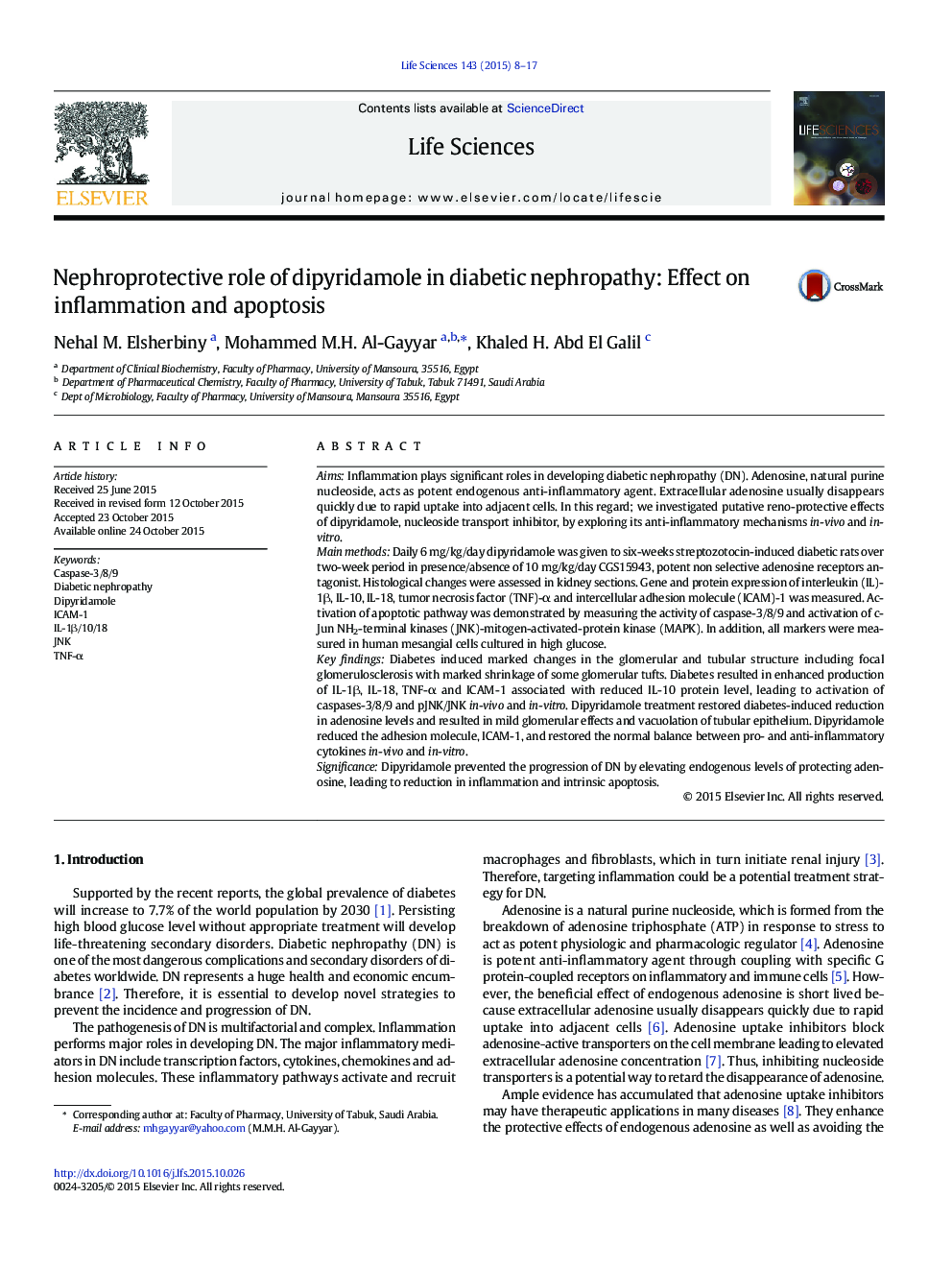| Article ID | Journal | Published Year | Pages | File Type |
|---|---|---|---|---|
| 2550695 | Life Sciences | 2015 | 10 Pages |
AimsInflammation plays significant roles in developing diabetic nephropathy (DN). Adenosine, natural purine nucleoside, acts as potent endogenous anti-inflammatory agent. Extracellular adenosine usually disappears quickly due to rapid uptake into adjacent cells. In this regard; we investigated putative reno-protective effects of dipyridamole, nucleoside transport inhibitor, by exploring its anti-inflammatory mechanisms in-vivo and in-vitro.Main methodsDaily 6 mg/kg/day dipyridamole was given to six-weeks streptozotocin-induced diabetic rats over two-week period in presence/absence of 10 mg/kg/day CGS15943, potent non selective adenosine receptors antagonist. Histological changes were assessed in kidney sections. Gene and protein expression of interleukin (IL)-1β, IL-10, IL-18, tumor necrosis factor (TNF)-α and intercellular adhesion molecule (ICAM)-1 was measured. Activation of apoptotic pathway was demonstrated by measuring the activity of caspase-3/8/9 and activation of c-Jun NH2-terminal kinases (JNK)-mitogen-activated-protein kinase (MAPK). In addition, all markers were measured in human mesangial cells cultured in high glucose.Key findingsDiabetes induced marked changes in the glomerular and tubular structure including focal glomerulosclerosis with marked shrinkage of some glomerular tufts. Diabetes resulted in enhanced production of IL-1β, IL-18, TNF-α and ICAM-1 associated with reduced IL-10 protein level, leading to activation of caspases-3/8/9 and pJNK/JNK in-vivo and in-vitro. Dipyridamole treatment restored diabetes-induced reduction in adenosine levels and resulted in mild glomerular effects and vacuolation of tubular epithelium. Dipyridamole reduced the adhesion molecule, ICAM-1, and restored the normal balance between pro- and anti-inflammatory cytokines in-vivo and in-vitro.SignificanceDipyridamole prevented the progression of DN by elevating endogenous levels of protecting adenosine, leading to reduction in inflammation and intrinsic apoptosis.
Graphical abstractFigure optionsDownload full-size imageDownload high-quality image (88 K)Download as PowerPoint slide
